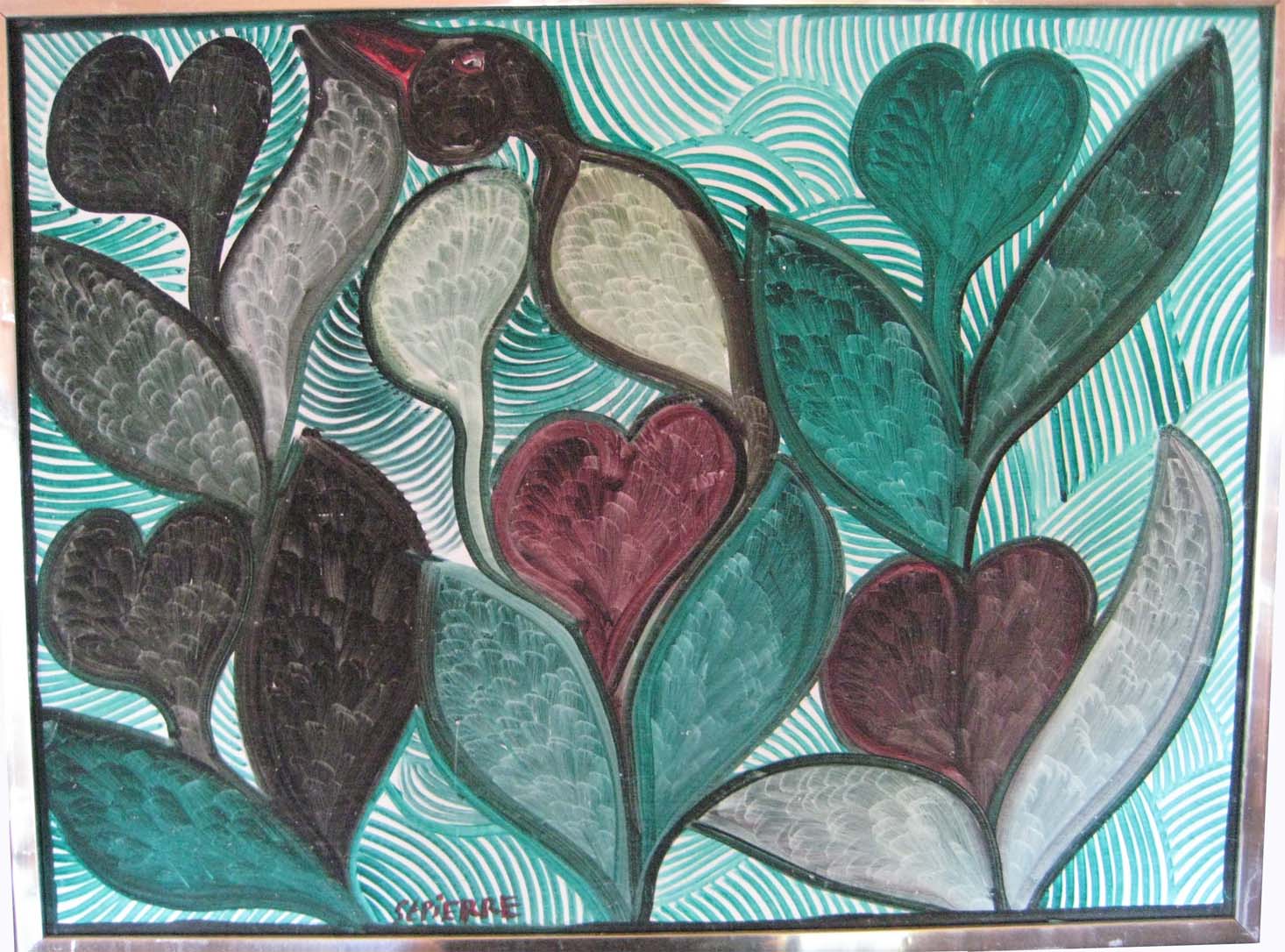St. Pierre Toussaint
(1923, Planton-Cafˇ, Haiti– 25 Sept 1985)

Title Unknown (bird & plants)
Acrylicon Masonite Board
late1970Õs
17.75x 23.75 inches, painting
19 x 24 7/8 inches, silver metal frame
Signed, lower left
$560.00
Very good condition with a couple of small, fairly unobtrusive scratches here and here on the surface.
Saint-Pierre Toussaint was born and lived in Planton-Cafˇ, a small hamlet near the well-to-do district of Kenscoff, 1500 meters above Port-au-Prince. For most of his life he was a farmer. One story relates that he began painting in the summer of 1968 when a summer visitor left him his amateur painter's kit and Saint-Pierre Toussaint started using it.
The other story says that he began painting in 1972, when, according to Ute Stebich (in his biography from her 1978 Brooklyn Museum landmark show and catalog) he was inspired to paint by watching his neighbor, the artist Michelle Manuel. According to Michelle, St. Pierre was constantly filching her children's art supplies until she bought him some of his own. He painted in and outside of a modernistic rough stone structure on the Kenscoff road. The studio was built for him by his patron, the Haitian architect and sculptor Albert Mangones; it was circular with glassless windows all around and a round opening at the very top to let in additional light. It was quite an avant-garde structure for the neighborhood which consisted mainly of peasant huts made of mud with thatched roofs. The studio was surrounded by his carefully cultivated fields of vegetables. He was an energetic and lively man, said to have been married to a hounsi, a dancer at vodou ceremonies. Once when I visited him, a loud clap of thunder boomed overhead. He winked and me and said with a big smile, "Cousin Zaca!", referring to the vodou god of agriculture.
St. Pierre was a true untrained naive expressionist who was, during his life, disdained by the art establishment in Haiti as decorative. In fact his dismissal by established galleries may have been attributed to the fact that St. Pierre sold his work directly to the public from his studio, bypassing the middlemen.
He has since become recognized as an important artist. A tryptych of his was included in the Brooklyn Museum show and his work is appreciated by collectors world-wide for its originality and joyful energy.
St. Pierre died in Kenscoff on September 25, 1985.
-- bio from Galerie Macondo, http://www.artshaitian.com/Pages/haitianartstp.html
